Every detail of this 3D CADD model is authentic. Eyewitnesses in the De Soto Chronicles (1540), Juan Pardo (1568), Richard Brigstock (1653) and John Lawson (1700) stated that unlike most other tribes, the Creeks wore woven clothing and averaged a foot taller than Europeans . . . plus the adult men wore mustaches and the principal leaders/elders wore beards. Unfortunately, virtually all museum exhibits do NOT portray them accurately.
by Richard L. Thornton, Architect & City Planner
The facial features above are that of a gggg-grandfather, who was painted after being one of the signers of the 1773 Treaty of Augusta with Great Britain. However, by then Creek men were wearing their hair about the same length and style as British men.
During the Early Colonial Period, leaders wore a bun on top of their heads. Commoners wore a bun on the backs of their heads. Nobility and commoners, who were clan or village leaders, wore colored or beaded turbans. Like the Maya commoners, other Creek commoners wore white turbans. When hunting or going into battle, Creek soldiers often wore leather turbans, since they were more durable and provided camouflage. According to the De Soto Chronicles, Creek women, who were leaders, also wore turbans.
The two meter (6′-6″) tall man here is wearing the garments of a Taskemako (company commander) of the Vehite, the standing National Guard of the Kingdom of Apalache or Apalachen Confederacy. During times of extreme danger, however, all young men were expected to bear arms. Most branches of the Creeks, except the Upper Creeks (Kusate), called themselves Apalachete or Palache until the name Maskoki (Muskogee) was coined around 1748.
This gentleman is a wearing a loose-fitting tunic, woven from mulberry tree fibers. Eyewitnesses described the fabric as looking much like linen, but more durable. This tunic is now called the “Creek Long Shirt.” Today, you will also see Seminole men wearing neckerchiefs and vests. This tradition is not common among the Muskogee Creeks in Oklahoma. This fact suggests that the neckerchiefs and vests were clothing borrowed from the Spanish in Florida.
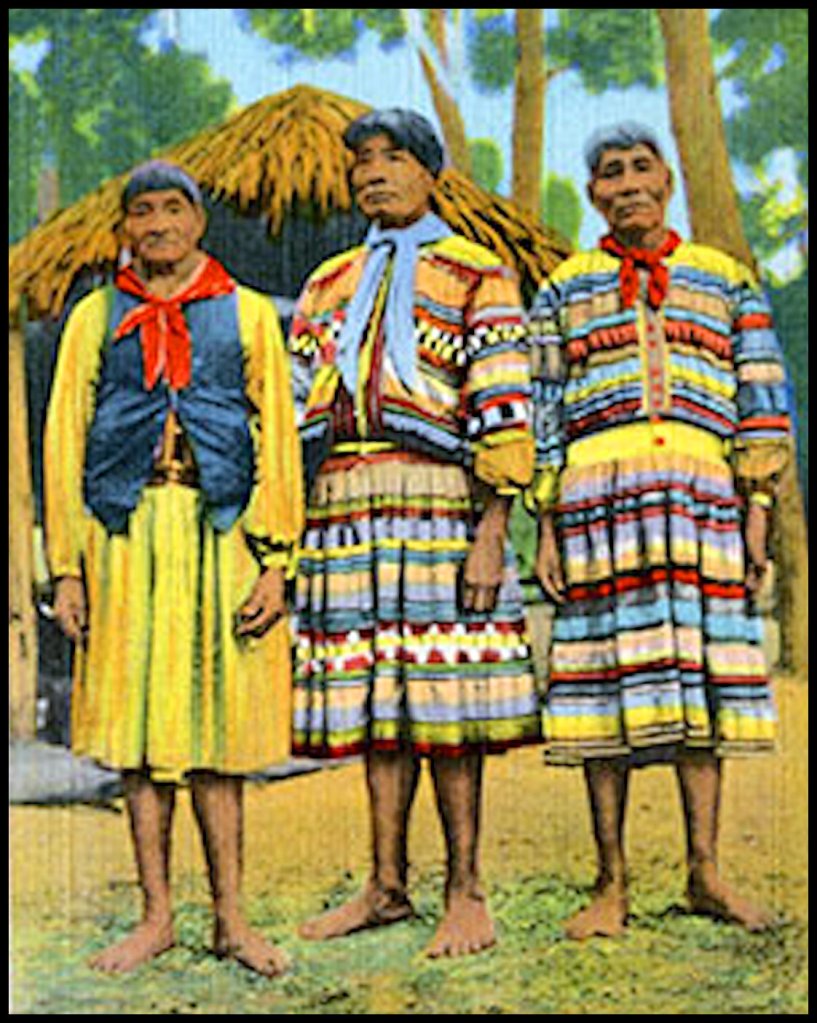
The De Soto Chronicles described the tunics and dresses woven by Georgia’s indigenous men and women as being covered with ornate, brightly colored patterns. Observations by Richard Brigstock in 1653 suggest that brightly colored clothing was saved for special occasions by most people of Apalache. Normally, they wore unbleached, white mulberry fiber clothing.
Throughout the Early Colonial Period, Southeastern indigenous men and women had shoulder-length hair. Leaders usually wore their hair as a bun on top of the head. Commoners wore buns on the back of their head. Men would leave their hair long in extremely cold weather.

Young Eastern Creek ladies from near Macon, GA and Plant City, FL. – The lassie on the right is a member of my mother’s Bone Family. Our protruding chins seem to go back hundreds of years, but are common among the Seminole branch of the Creeks. Both in Florida and Oklahoma most of my relatives joined Seminole tribes, not Muskogee-Creek tribes.
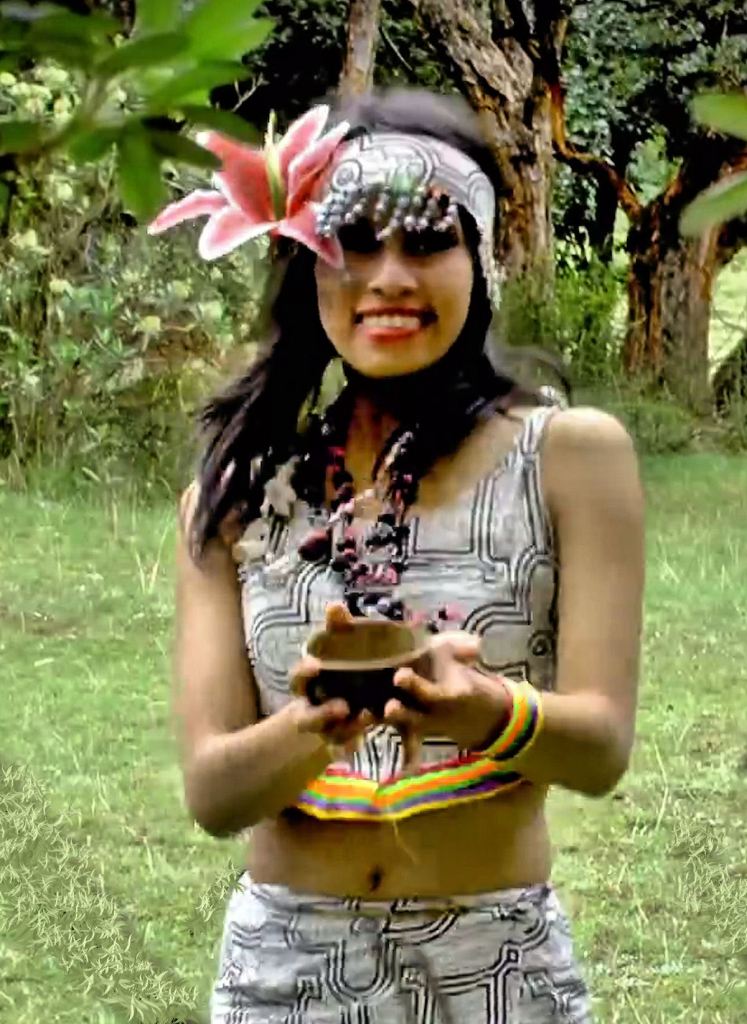
This young Panoan lady in Eastern Peru is wearing a turban and strongly resembles many Eastern Creek gals in South Carolina. Most Eastern Creeks carry a substantial percentage of Panoan DNA markers, but the tribes in South Carolina, who were in the Cusabo branch of the Creek Confederacy, were almost 100% Panoan. Cusabo and Apalache are Panoan words. Cusabo means “Elite – Place of” . . . while Apalache means “From Upper Amazon Basin (or ocean, depending on the accent) – Descendants of.”
An astonishing variety of women’s hair styles can be found among the stone and ceramic statues unearthed in northern Georgia. Hair style seems to have been a way for women, who all had black hair, dark eyes and tan skin to draw attention to themselves. Most of the Florida Seminoles are descended from Eastern Creeks in northern Georgia and western North Carolina. We can assume that the exotic hair styles of Seminole women today trace back to their homeland.

What appears to be hats on these Seminole mothers are actually natural hair. However, the range of Eastern Creek women’s hair styles go far beyond what is seen here.

Several of the statues, found in northern Georgia portray women with simple pony tails or pig tails. I strongly suspect that when girls and women were preparing food or gardening in warm weather, they wore pony tails or pig tails. Note that this ceramic statue from Etowah Mounds has an artificially flattened forehead.
During the hot, summer months, both men and women went topless. The women wore simple skirts, while the men usually wore kilts. There was absolutely no cultural taboo about a woman exposing her breasts, but both men and women were expected to keep their reproductive organs covered when in public.
Beginning around 1700 AD Creek men suddenly started shaving their heads and faces like the Northern Indians. The cultural change may have had something to do with scalping, but this is not known for certain. It is true, however, that the Creeks stopped shaving their heads when the Iroquois stopped raiding the Southern tribes.
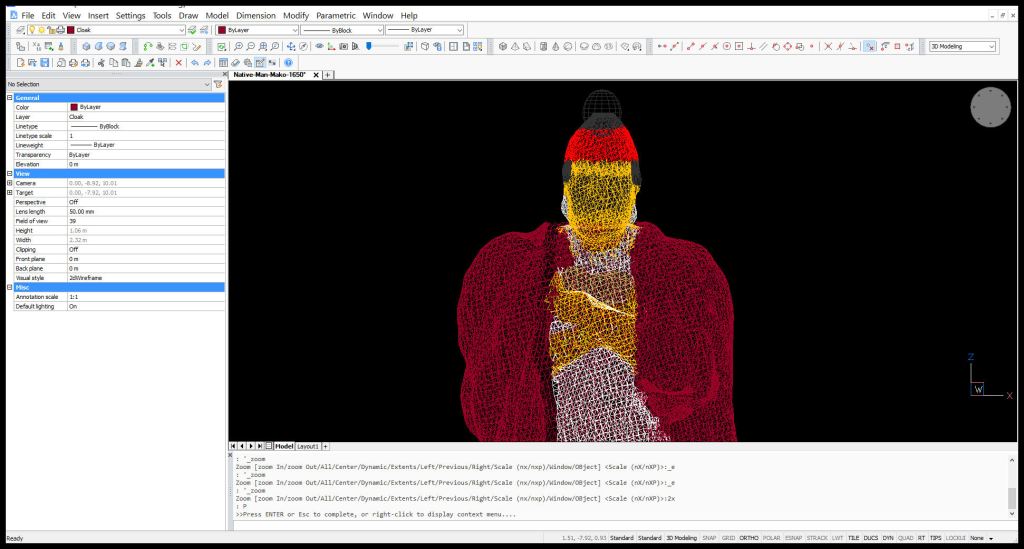
Creating a human figure for Virtual Reality models
Above is the finished CADD model of the Early Colonial Period Creek man. It took me about two weeks to create it. Very few architects would have the computer skills to take on that task, because in conventional architectural practice, one must devote whatever time is available to learn the new CADD-based technology for designing and constructing new buildings. I learned those skills gradually over a 20 year period as more and more institutional clients asked me to apply architectural graphics to historic or prehistoric structures.
In contrast, it took me less than an hour to create the virtual reality image that you see at the top of the page. That same virtual reality model could be easily made into an animated video.
That is the advantage of this new era of computer generated graphics and videos. Once I have spent the long hours required to create historically accurate 3D figures, it is quite simple to utilize them in the creation of completely accurate exhibits in museums or illustrations in books.
Well, it is not THAT simple. One has to learn how to operate the sophisticated virtual reality programs, but once you learn that technology, almost any image or video is possible . . . even a Creek lady wearing a pony tail. LOL
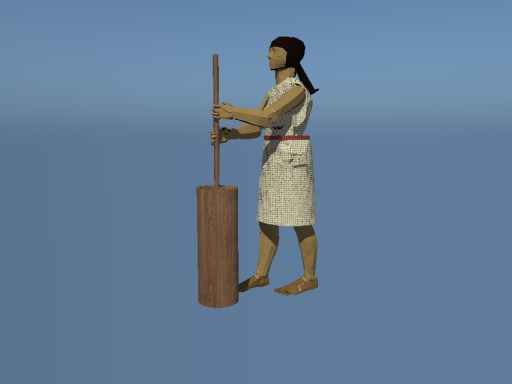
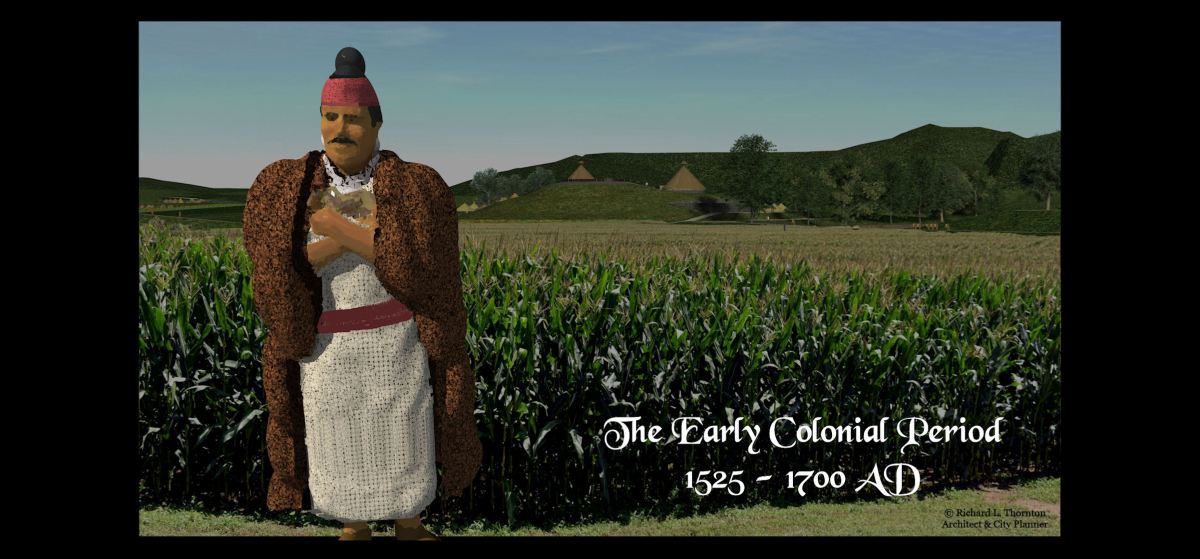
Love this post Richard, the young ladies are so pretty. Interesting about the male and their beards because I have been researching the fact that the Minoans were supposedly to have been clean shaven but no one has provided proof of this. Have a good weekend. Best wishes Rita.
LikeLiked by 1 person
Of course, the Minoans are a long time ago in the Bronze Age, but I can’t recall any Minoan mural with a beard showing.. It is a weird situation here in that we have lots of 18th and 19th century paintings showing Creek men with mustaches, but the artists working for museums always paint them to look like Western Plains Indians. You have a grand weekend too!
LikeLiked by 1 person